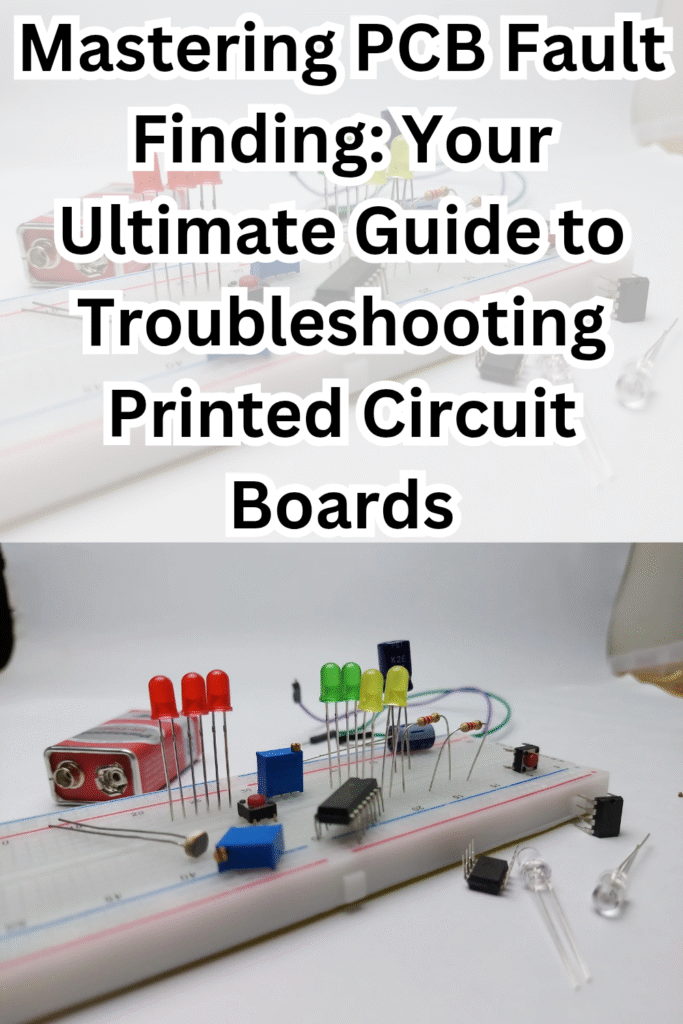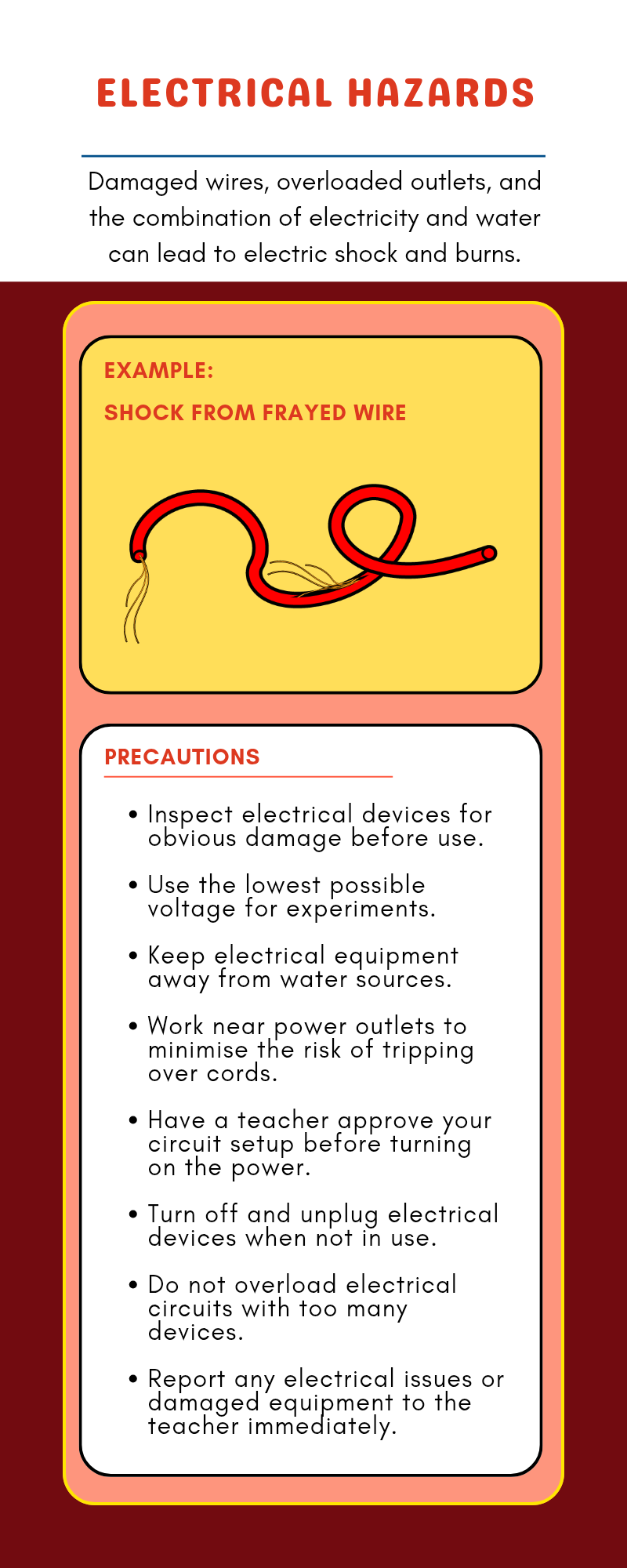
Hey there, fellow electronics enthusiasts! Have you ever found yourself staring at a seemingly lifeless Printed Circuit Board (PCB), wondering where to even begin troubleshooting?
Trust me, we’ve all been there.
The intricate dance of components and traces on a PCB can be daunting when something goes wrong.
But fear not! With the right approach and a few handy tools, you can transform from a bewildered beginner into a PCB fault-finding pro.
In this comprehensive guide, I’ll share my personal insights and practical techniques to help you diagnose and fix those stubborn PCB issues.
Let’s dive in!
The Art of PCB Troubleshooting: Why It Matters
PCBs are the unsung heroes of modern electronics, powering everything from your smartphone to complex industrial machinery.
When a PCB malfunctions, it can bring an entire system to a halt, leading to frustration and costly downtime.
That’s why mastering PCB fault finding isn’t just a technical skill; it’s an art that saves time, resources, and a whole lot of headaches.
Whether you’re a hobbyist, a student, or a seasoned engineer, understanding how to effectively troubleshoot PCBs is an invaluable asset.

1. Visual Inspection: The First Line of Defense
Before you even think about grabbing your multimeter, the very first step in PCB fault finding is a thorough visual inspection.
It might sound too simple, but you’d be surprised how many issues can be spotted with just your eyes, or with the aid of a magnifying glass or microscope.
Think of it as detective work – you’re looking for clues that tell a story about what went wrong.
Here’s what I always look for:
Burn Marks or Discoloration: These are often tell-tale signs of overheating, short circuits, or components that have failed catastrophically. A burnt smell is another strong indicator.
Cracked or Broken Components: Physical damage can occur from drops, impacts, or even improper handling during assembly.
Look for chips, cracks, or components that appear to be dislodged.
Poor Solder Joints: This is a classic. Cold solder joints (dull, grainy appearance), solder bridges (unintended connections between two points), or insufficient solder can all lead to intermittent connections or complete circuit failure.
A good solder joint should be shiny and smooth, forming a nice fillet around the component lead.
Component Misalignment: Sometimes, components aren’t placed correctly during manufacturing, leading to improper connections.
Ensure everything is seated squarely and aligned with its pads.
I always start here because it’s quick, easy, and often reveals the most obvious problems without needing any specialized equipment.
It’s like checking for a flat tire before you start dismantling the engine! [1]
2. Multimeter Magic: Your Go-To for Basic Testing
Once you’ve exhausted the visual inspection, it’s time to bring out the workhorse of electronics troubleshooting: the multimeter.
This versatile tool is indispensable for checking voltage, resistance, and continuity, giving you a clearer picture of what’s happening (or not happening) on your PCB.
Here’s how I typically use my multimeter for PCB fault finding:
Continuity Test: This is my absolute favorite for quickly checking connections.
Set your multimeter to continuity mode (it usually beeps when there’s a connection).
I use it to verify traces, check for short circuits between pads, or confirm if a switch is working.
If it doesn’t beep when it should, you’ve found an open circuit or a broken trace.
Resistance Check: Resistors are crucial for controlling current flow.
I’ll measure the resistance of suspicious resistors and compare it to their marked value or the schematic.
A significant deviation means the resistor might be faulty.
Remember to test resistors out of circuit if possible, or at least ensure no power is applied, to get accurate readings.
Capacitor Test: While multimeters can’t give you a full capacitance reading like a dedicated capacitance meter, many have a basic capacitor test function.
You can also check if a capacitor is holding a charge.
A ‘dead’ or ‘leaky’ capacitor can cause all sorts of strange behavior, from unstable power to signal integrity issues.
Pro Tip: Always, always, always make sure the PCB is powered off and any large capacitors are discharged before you start poking around with a multimeter.
Safety first, and it also prevents inaccurate readings or further damage to your components! [1]
3. Thermal Imaging: Uncovering Hidden Hotspots
Sometimes, a fault isn’t immediately visible, but it’s certainly felt – as heat! Faulty components often generate excessive heat due to improper current flow, short circuits, or internal damage.
This is where thermal imaging comes in handy.
Using a thermal camera or an infrared thermometer, you can quickly identify areas of abnormal heat on your PCB, pinpointing potential culprits.
I find thermal imaging particularly useful for:
Identifying Overheating Components: Components like voltage regulators, power transistors, and integrated circuits (ICs) are prone to overheating when they fail.
A thermal camera can show you exactly which component is running hotter than it should.
Detecting Short Circuits: A short circuit can cause a localized hotspot as current rushes through an unintended path.
Thermal imaging can reveal these hidden shorts, even if they’re under components or within the layers of the PCB.
Troubleshooting Intermittent Faults: Some faults only appear when the board is under load or has been running for a while.
Thermal imaging can capture these transient heat signatures that might otherwise go unnoticed.
It’s like giving your PCB an X-ray vision to see its thermal footprint.
If a component is glowing bright red or yellow on your thermal imager, you’ve likely found your problem area! [1]
4. Signal Tracing with an Oscilloscope: Visualizing the Invisible
When you’re dealing with more complex digital circuits or subtle signal issues, a multimeter just won’t cut it.
That’s when I turn to my oscilloscope.
This powerful tool allows you to visualize electrical signals as waveforms, helping you identify problems like signal distortion, noise, or incorrect timing that are invisible to the naked eye or a simple multimeter.
Here’s how I use an oscilloscope for signal tracing:
Checking Waveforms: Every signal in a circuit has an expected waveform – a specific shape, amplitude, and frequency.
I’ll probe various test points on the PCB and compare the actual waveform to what I expect to see.
Deviations can indicate issues with capacitors, transistors, or even integrated circuits (ICs) that are not behaving as they should.
Monitoring Clock and Data Lines: In digital circuits, precise timing is everything.
I use the oscilloscope to monitor clock signals and data lines.
A faulty clock signal can prevent the entire PCB from functioning correctly, and corrupted data signals can lead to erratic behavior.
Identifying Noise and Interference: Sometimes, a circuit works, but not reliably.
This can be due to electrical noise or interference.
An oscilloscope can help you see this unwanted noise superimposed on your signals, guiding you to the source of the problem.
It’s like being able to see the heartbeat of your circuit. If the heartbeat is irregular, you know something’s wrong! [1]
5. Power-on Test: Monitoring Voltage and Current
While caution is always advised, sometimes the best way to diagnose a PCB is to power it on and observe its behavior.
This allows you to measure voltages and currents under live conditions, which can reveal issues that static tests might miss.
However, proceed with care, as a faulty board can sometimes draw excessive current or damage other components if not handled properly.
My approach to power-on testing usually involves:
Power Supply Check: The very first thing I do is verify that the power supply is delivering the correct voltage to the PCB.
An incorrect or unstable power supply can cause a cascade of problems, leading to erratic operation or no operation at all. I’ll check at the input, and then at various voltage regulators on the board.
Measure Current Draw: If the PCB is drawing too much or too little current, it’s a strong indicator of a fault.
A high current draw often points to a short circuit or a component that has failed and is drawing excessive power.
Conversely, a very low current draw might mean an open circuit or a component that isn’t turning on.
Component Temperature Monitoring: Even without a thermal camera, you can often feel components to see if they are getting unusually hot.
This is a quick and dirty way to identify hotspots, but be careful not to burn yourself!
This method is particularly effective for identifying issues related to power delivery and overall circuit stability. [1]
6. In-Circuit Testing (ICT): Automated Precision
For more complex PCBs, especially in manufacturing environments, In-Circuit Testing (ICT) is a powerful method.
While it might not be something you do at your home workbench, understanding it is crucial.
ICT systems use automated probes to test individual components on the PCB without removing them.
It’s like having a robot meticulously check every single part of your board.
ICT systems are excellent for:
Automated Component Verification: They can quickly check parameters like resistance, capacitance, and voltage for each component, ensuring they are within specified tolerances.
Short Circuit and Open Connection Detection: ICT can rapidly identify shorts or opens, which are common manufacturing defects.
This makes it incredibly efficient for high-volume production lines.
This method offers a high degree of fault coverage and is invaluable for ensuring the quality and reliability of mass-produced PCBs. [1]
7. Signal Injection for Debugging: Targeted Diagnostics
Signal injection is a more advanced, yet incredibly effective, technique for isolating faults within a specific part of a circuit.
It involves introducing a known test signal into different points of the PCB and then observing the output with an oscilloscope or other diagnostic tools.
This method helps you trace the signal path and identify where it deviates from the expected behavior.
Here’s how I typically use signal injection:
Inject a Test Signal: Using a signal generator, I’ll inject a clean, known signal (e.g., a sine wave, square wave, or pulse) into the input of a specific section of the circuit.
Monitor the Response: I then use an oscilloscope to monitor the signal at various points downstream from the injection point.
If the signal changes unexpectedly, or disappears entirely, I know the fault lies somewhere between the last good test point and the current one.
This technique is particularly powerful for troubleshooting complex analog circuits, audio amplifiers, or communication systems where signal integrity is paramount.
It allows you to systematically narrow down the problem area, saving a lot of time and guesswork. [1]
Choosing the Right Method: A Systematic Approach
As you can see, there isn’t a one-size-fits-all solution for PCB fault finding.
The best approach often involves a combination of these methods, depending on the complexity of the board, the nature of the fault, and the tools you have available.
For basic issues, a visual inspection followed by multimeter tests will often suffice.
For more intricate problems, you’ll need to bring out the heavy hitters like oscilloscopes and thermal cameras.
The key is to be systematic. Don’t just randomly poke around.
Start with the simplest methods and gradually move to more advanced techniques. Document your findings, even if it’s just a quick note.
This methodical approach will save you countless hours of frustration and significantly increase your chances of successfully diagnosing and repairing your PCBs.
My Final Thoughts: Embrace the Challenge
PCB fault finding can be challenging, but it’s also incredibly rewarding.
Every time you successfully bring a dead board back to life, you’re not just fixing electronics;
you’re honing your problem-solving skills and deepening your understanding of how these amazing devices work.
So, don’t be intimidated.
Embrace the challenge, learn from every failure, and remember that even the most experienced engineers started somewhere.
Happy troubleshooting, and may your PCBs always be functional!
References
[1] PCB Power. (2024, September 27). *How to Find Faulty Components on a PCB: A Practical G
